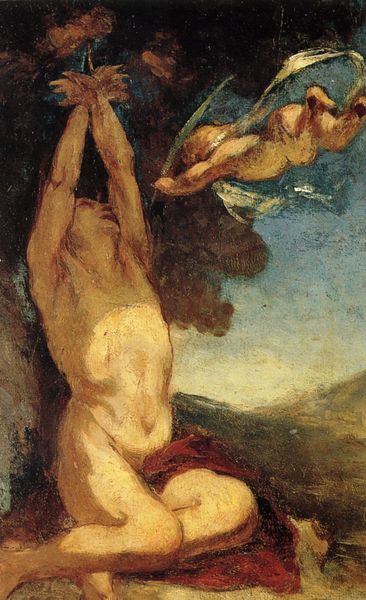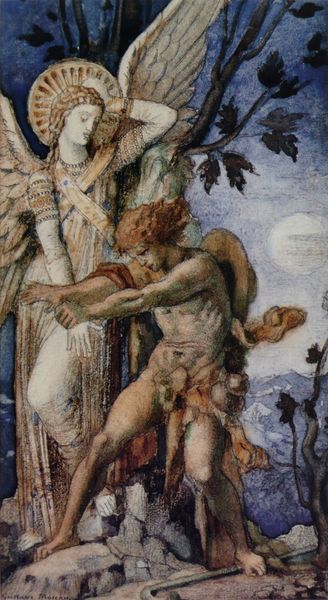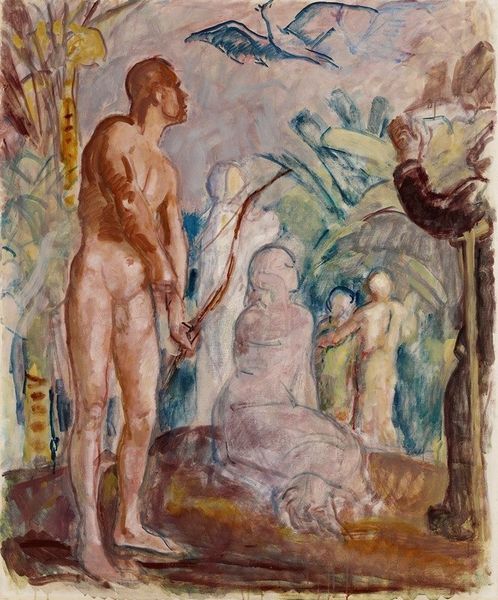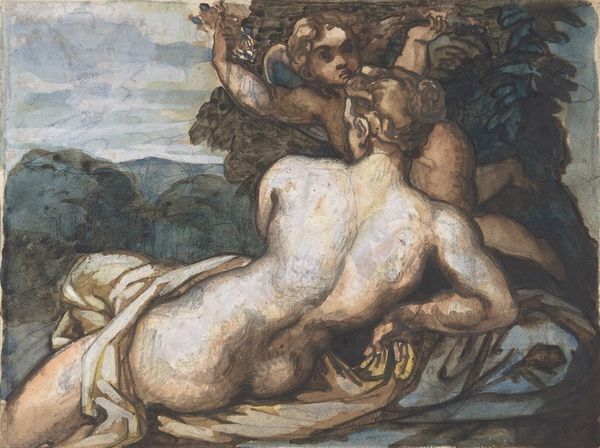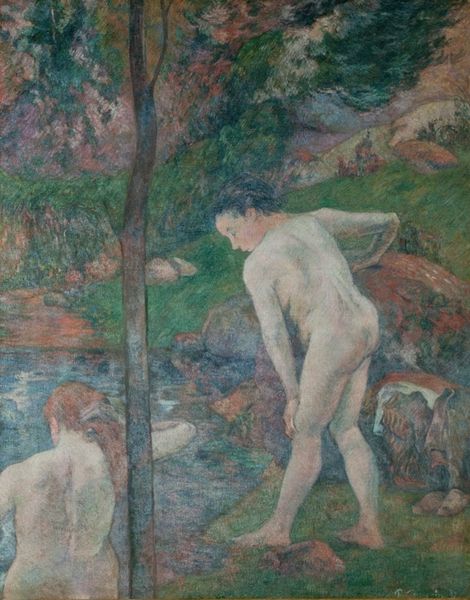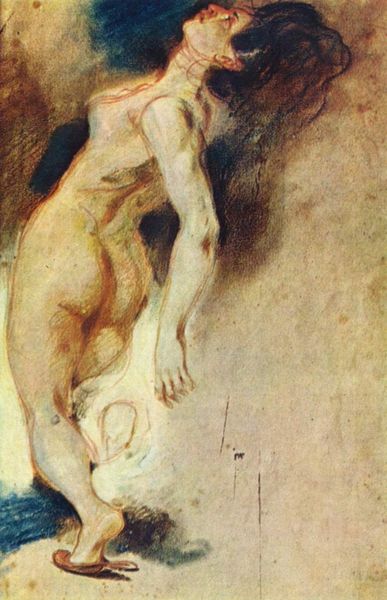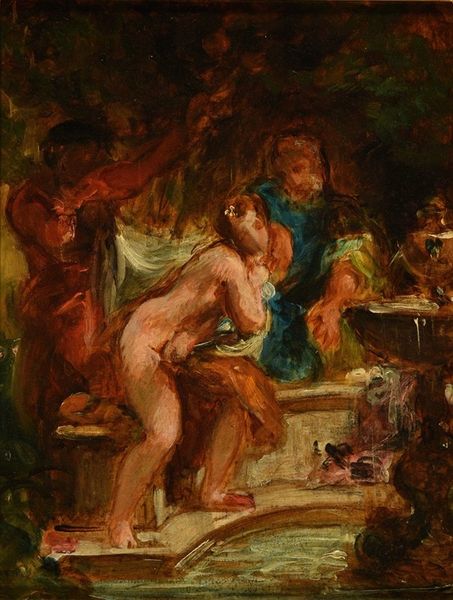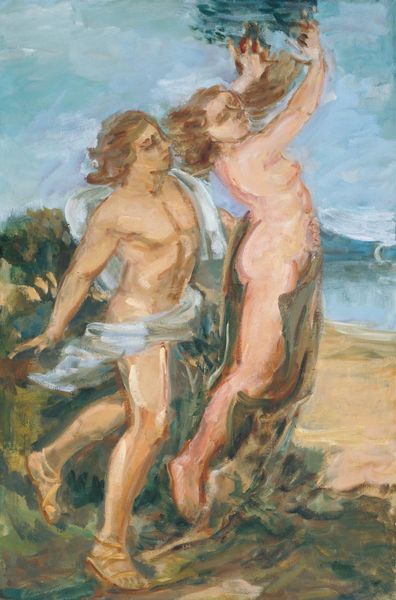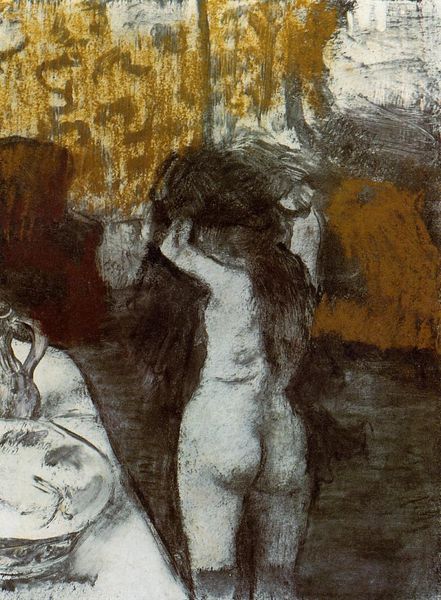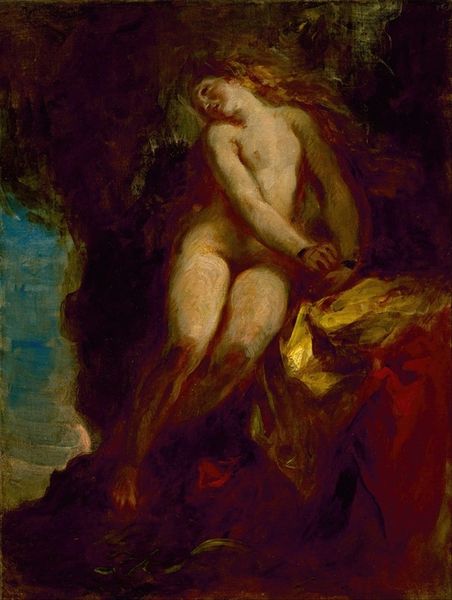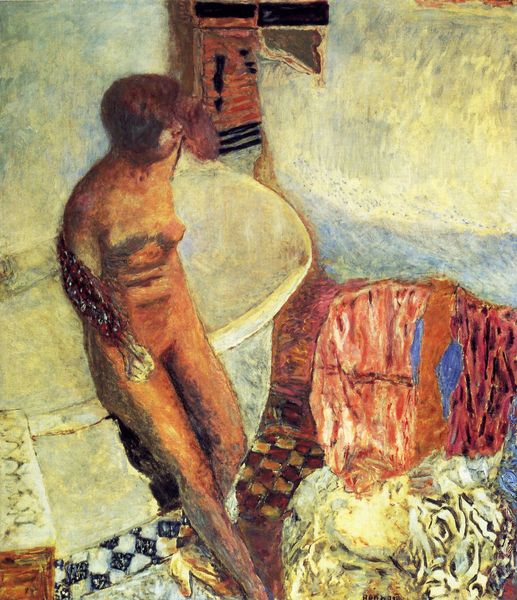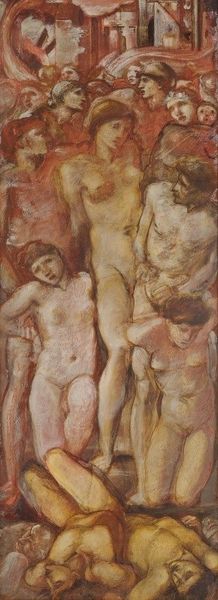
Dimensions: 115 x 72 cm
Copyright: Public domain
Curator: Standing before us is Pierre Bonnard's painting "Man and Woman," created in 1900. It’s a domestic scene, rendered in oil with notable impasto, now housed at the Musée d'Orsay. Editor: The immediate impression is quite dreamlike. A divided composition, a nude man and woman, an ambiguous doorway. It almost feels like a fractured memory, the colours are saturated but muted. Curator: It certainly plays on intimacy and the everyday, quintessential Bonnard. Note how he obscures a clear narrative, employing a stylistic rendering more rooted in romanticism, where the emotion takes precedence over realistic representation. There are many possible readings, what meanings might you associate with these figures? Editor: I notice the prominent division down the center. The vertical darkness bisects the composition almost creating two distinct canvases in dialogue. The textural density, the use of oil-paint and heavy impasto contribute to its very palpable and arresting tension. Semiotically the mirror suggests not vanity but instead is highlighting internal emotionality. The floral wall pattern almost makes this claustrophobic in it’s overt Romantic qualities. Curator: Absolutely. Mirrors are recurring motifs in Bonnard's work. But consider the historical context. The male nude traditionally symbolizes strength, dominance, even heroism. Bonnard subverts this, positioning him in this very private sphere, as more observer than participant, a reversal that mirrors the evolving role of men in society. Editor: That disruption is key to the lasting effect. By placing those symbols in opposition the message conveyed has more to offer us now, it invites interpretation rather than asserting a universal truth. There’s a strong commentary about subjectivity but presented in an intriguing painterly perspective. Curator: Bonnard seems more invested in suggestion than declaration. His use of implied meaning elevates this genre painting beyond a simple depiction of life in fin-de-siècle France, creating a lasting emotional echo that ripples throughout time. Editor: Ultimately, for me, it’s about the fragmented vision, it offers layers that unveil with each viewing. A fascinating exercise in perception and memory.
Comments
No comments
Be the first to comment and join the conversation on the ultimate creative platform.
